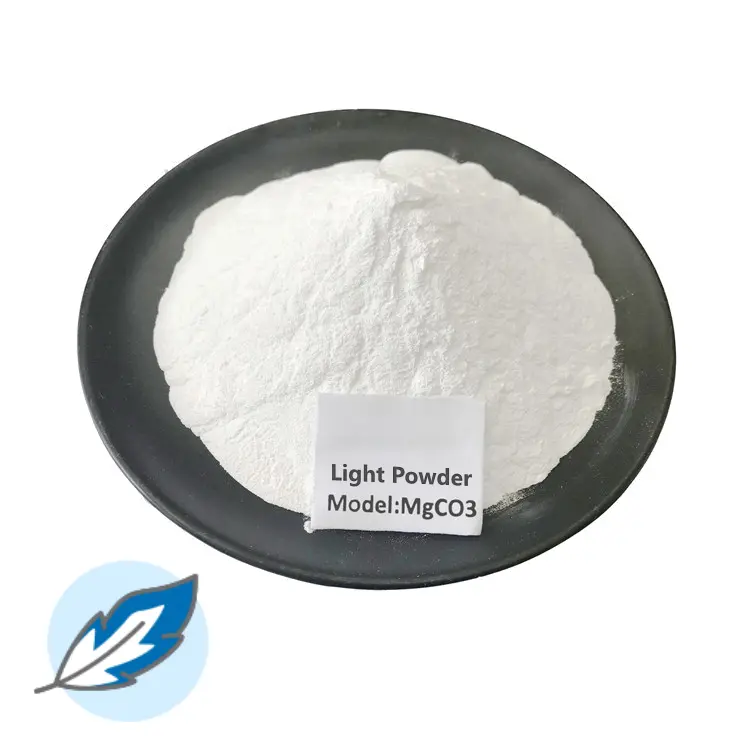Research on the Preparation of Magnesium Carbonate Templates:

Micronano-rod-shaped hydromagnesite (MgCO3·3H2O) was prepared by thermally decomposing heavy magnesium water in the presence of alcohol. Using the resulting hydromagnesite as a precursor, micro/nano-structured bismuth nitrate magnesium carbonate and anhydrous magnesium carbonate were synthesized via phase transformation. The influence of reaction factors on the preparation of micro-sized magnesium carbonate was systematically investigated. The results showed that the crystallization rate plays a key role in determining the particle size during the magnesium carbonate formation. By adjusting the stirring time of the hydromagnesite thermal decomposition process, the size of MgCO3·3H2O can be controlled within the micro/nano range. Furthermore, controlling the size of hydromagnesite allows modulating the macroscopic size of bismuth nitrate magnesium carbonate and anhydrous magnesium carbonate after phase transition.
Exploration of Magnesium Carbonate Circulating Template Method for Preparing Micro/Nano Hollow Metal Oxides:
Rod-shaped hydromagnesite and flower-like hierarchical bismuth nitrate magnesium carbonate were used as templates, and metal alkoxides were used as the main raw materials. Through the sol-gel process and the phase transition between magnesium carbonate and magnesium bicarbonate, SiO2, Al2O3, TiO2 μm tubes, and SiO2, SiO2-TiO2 hollow hierarchical structures were successfully synthesized. The template recycling results showed that the collected magnesium bicarbonate leachate can still be used to prepare rod-shaped hydromagnesite templates and flower-like hierarchical bismuth nitrate magnesium carbonate templates after repeated cycles. As a novel type of functional material, the generated hollow hierarchical structures of SiO2 and SiO2-TiO2 exhibited excellent adsorption capacity and adsorption rate.
Exploration of Magnesium Carbonate Sacrificial Template Method for Generating Complex Micro/Nanostructured Metal Oxides:
Using NiO as a model substance and magnesium carbonate as a sacrificial template, tubular NiO and complex hierarchical NiO structures were synthesized using nickel nitrate as the main raw material. It was inferred that the formation mechanism of their precursors was based on the Kirkendall effect and metathesis reaction. This method was extended to other metal oxides, achieving the synthesis of Fe2O3, Co3O4, Gd2O3 μm tubes and Gd2O3 hierarchical structures. The resulting hierarchical NiO and Fe2O3 exhibited relatively high adsorption capacity and excellent adsorption rate, promising for applications in catalysis, energy, and environmental industries.
Exploration of the Preparation of Micro/Nano Magnesium Oxide by Thermal Decomposition of Magnesium Carbonate as a Precursor:
The influence of reaction conditions on the structure and adsorption properties of magnesium oxide was systematically discussed. The results showed that calcining micro/nano magnesium carbonate particles could obtain magnesium oxide with corresponding size and morphology, and the magnesium carbonate precursor also acted as a template. Calcination temperature, heating rate, and precursor size and morphology did not significantly affect the structure of the final product but did affect the adsorption properties of magnesium oxide. When magnesium oxide was used for the adsorption of cationic dye crystal violet, the tubular hierarchical magnesium oxide showed a strong crystal violet adsorption level, and its maximum adsorption capacity reached 4400mg/g, which is several times or even dozens of times that of the reported crystal violet adsorbent. The magnesium oxide adsorbed with crystal violet was recycled, and the magnesium oxide was dissolved by carbon dioxide and water to form a magnesium bicarbonate solution. At the same time, H202 catalytic oxidation was used to treat the crystal violet in the magnesium bicarbonate solution. The magnesium bicarbonate after decolorization can be successfully used to recycle and prepare magnesium oxide nanotechnology adsorbent.
